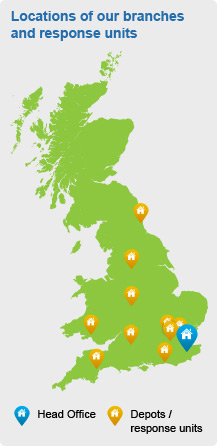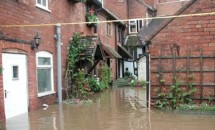What is Water Damage?
Water is one of nature’s most destructive forces and can cause significant damage to property and possessions if it is given the opportunity to do so.
Water damage is difficult to prevent, but what exactly is water damage, what are its effects and what can you do about it?
What is water damage?
Water is a substance that gives life, but it can also cause vast amounts of damage. Many materials and substances, such as electronics and paper, don’t hold up well when they’ve come in contact with water and become damaged as a result. The type of damage water caused depends on what it touches: for example, it could rot away wood or it could cause steel to rust.
Water damage may be a slow and gradual process or it may be caused by a catastrophic occurrence such as flooding. One certain thing, however, is that water damage is a major contributor to the loss of property.
Categories of water damage
Water and flood damage is traditionally classified into three different categories: Category 1, Category 2 and Category 3.
The first category, Category 1, describes a source of water that doesn’t pose a significant threat to humans and is known as ‘clean water’. Category 1 water damage might result from a burst pipe, a leak or general overflow.
Category 2 water damage is known as ‘grey water’. Grey water is a water source that can cause discomfort or sickness to humans if ingested because it contains chemical, biological or physical contaminants. This type of water damage could be caused by water discharge from washing machines and dishwashers.
The final classification of water damage, Category 3, is known as ‘black water’ and it presents the biggest health risk to humans because it contains unsanitary agents such as harmful bacteria. This category includes water sources from seawater, sewage or standing water.
How can you prevent water damage?
In many situations it can be very difficult to prevent water damage. Such damage can be caused by a variety of methods which are often unforeseen such as water seepage or broken water supply lines.
It is possible to take preventative action against certain types of water damage to limit the amount of damage they cause, however. You can take actions to prevent flood damage for example by constructing barriers such as floodwalls and sandbags around your property.
The threat of water damage is largely dependent on the area you reside. If you live in an area near a river with high flood risk then your likelihood of being affected by water damage is much greater than someone who doesn’t.
How do you perform water damage repair?
The first step to restore a property after the effects of water damage is to remove all traces of water from the property. Effective water damage restoration can’t be performed with water still in the property. Water can cause further damage to infrastructure the longer it is left untouched, so removal is the top priority. If your entire home is flooded then there’s a good chance that you won’t be able to drain all the water by yourself so you may have to enlist the help of professionals to perform water damage repairs.
Once the water is removed the next stage is to dry out as much of the affected area as possible. This can be accomplished opening as many doors and windows as possible to allow the water to evaporate and professional drying equipment. If it is a small spill then it is entirely possible to clean up the damage via conventional methods such as an absorbent cloth.
In severe water damage cases, it is advised to hire the services of a professional water damage restoration company who will be able to ensure there isn’t any health risk to individuals living in the property. Even if you have successfully cleaned most of the water from the property, there are still health risks associated with moisture affected areas because they can breed mould and other bacteria.



